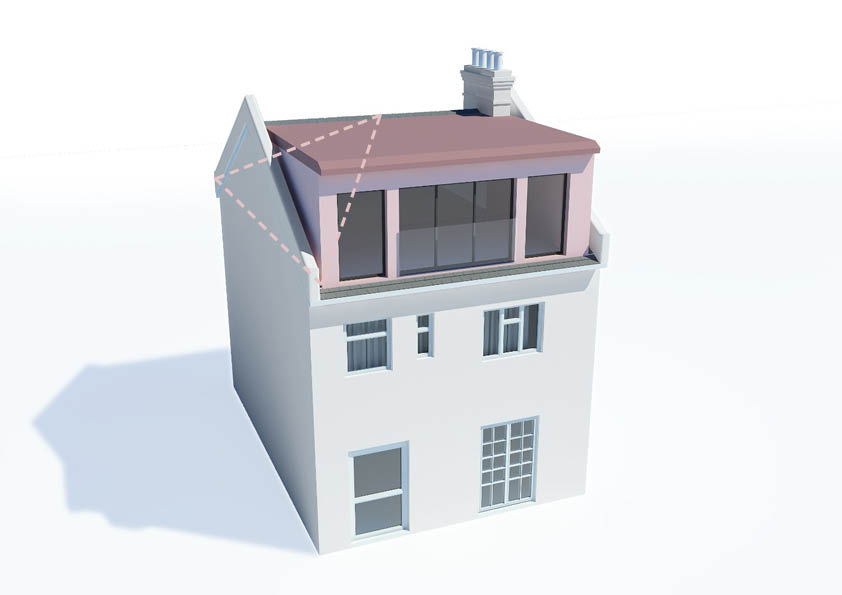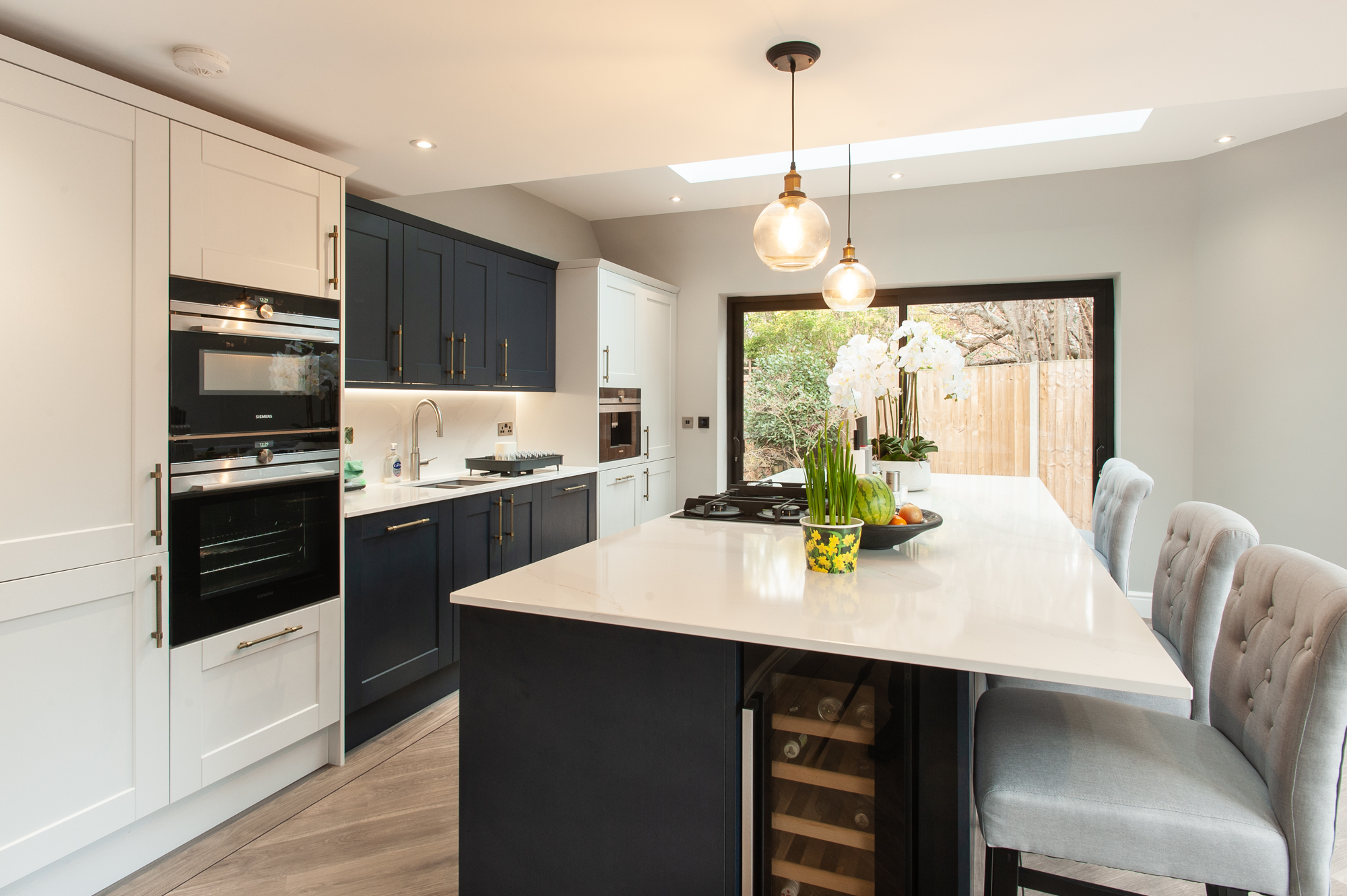Loft conversions are easily one of the most popular types of home extensions in the UK. And for good reason.
Being relatively simple to build, efficiently utilising unused attic space (without taking up any garden space), bringing in ample amounts of natural light, being versatile in their design, all while significantly increasing the value of the property. Loft conversions definitely tick all the boxes.
The only thing left to decide is the type of loft conversion best suited for your home.
The type of loft conversion most suitable for your home is determined by several factors such as the existing roof structure, your budget, local planning regulations, as well as the intended design or purpose of the newly-constructed loft space. This is why selecting the ideal loft conversion becomes of utmost importance.
What are the different types of loft conversions?
Loft conversions are typically categorised into different types based on the amount of structural work involved. Some of the most popular types of loft conversions include:
Velux loft conversion
The Velux or rooflight loft conversion is easily the simplest style of a loft conversion, which is both minimally disruptive and extremely cost-effective. The simplicity and uncomplicated design of a skylight loft conversion makes it possible to be constructed without requiring planning permission.
This type of loft conversion involves the installation of rooflights (or skylights) into the pitch of the existing roof without making other major structural changes to the roof. This allows for the creation of bright, airy, and inviting rooms, be it a quiet library or study nook, or even a private and well-lit bathroom.
However, since there is no extension of the roof taking place, it is imperative that there should already be sufficient head height available. With the addition of floor reinforcements, insulation, and a staircase, the rooflight loft conversion may cost between £20,000 to £55,000.

Dormer extension
Dormer extensions are increasingly viewed as being a balanced option for a loft conversion; in that they help create more head room and floorspace than a roof light conversion, but are cheaper and less complex to construct when compared to a mansard.
The dormer roof extension involves vertically extending the existing roof to create a flat roofed or pitched roof dormer. The choice of style is largely based on the aesthetic created, while the installation of dormer windows further enhances the space and brightens the room.
Dormer extensions are suitable for almost type of home or architectural style, and are particularly popular in semi-detached properties which have a sloping roof. And though they may require planning permission, the versatility of dormer loft extensions (which allows for the design and creation of beautiful, bright, and airy rooms), make this type of loft conversion incredibly popular among homeowners looking to maximise their living space.

L-shaped Dormer extension
Essentially a larger and more spacious version of the rear dormer extension, the L-shaped extension results from the combination of two dormers that are connected together. This type of extension may be further customised based on the design and functionality of the loft space, as well the structure of extension.
For example, an L-shaped dormer with a full width allows the maximum use of space; while an L-shaped with a balcony not only enhances the exterior appearance of the house, but also creates an appealing outdoor space.
These type of dormer extensions are more suited to Victorian and Edwardian properties that may already have a rear extension, and help create a great deal of added space, perfect for designing extra bedrooms, en-suites, or home offices.
These dormers do not always require planning permission if they fall under permitted developments, but it always best to check before initiating the build.
L-shaped dormer extensions may cost between £30,000-£60,000, but are an excellent investment as they allow for the creation of multiple additional rooms.

Hipped roof extension
Detached and semi-detached properties which feature a sloping roof are ideally suited for hipped roof loft conversions.
As this type of extension involves considerable structural work, including transforming the slope of the roof into a vertical wall, it is one of the more expensive types of loft conversions (costing upwards of £40,000), and generally requires planning permission.
Hipped roof extensions, however, add a great deal of living space, are visually appealing, and add incredible value to the property. Therefore, they are considered to be well worth the initial investment.

Double Mansard
Particularly suited to period properties including terraced, detached, and semi-detached homes, a double mansard is the largest and most extensive type of loft conversion.
It involves creating a mansard roof, by altering the slope of the roof to an angle of 72 degrees, at the front and rear of the house; essentially creating an entire new storey. And though this invariably requires planning permission and is expensive to construct, these extensions have a dramatic effect on the space within.
With the extensive space made available, a double mansard may be used to create multiple rooms, including one or two bedrooms and en-suites. All of which have a significant impact on the overall value of the property.

There’s no doubt about it. Loft conversions are the perfect way to upsize your home while creating beautiful, functional spaces that add value to your property. But in order to make the most of this investment, certain criteria must be met. Chief among them is that the loft conversion must be ideally suited for your home.
A loft conversion that requires extensive work (that is bound to take longer that your preferred timeline) or one that is way over your budget, is probably not the right fit for you.
Fortunately, just like everything else in construction, with careful planning and diligent preparation, and most importantly, with the right experts by your side, you can create the perfect loft conversion for your home. One that is flawlessly designed to optimise the available space, while at the same time ensuring that the schedule and budget of your loft conversion is adhered to; helping you to create a perfect new space that is exactly right for your home.
Looking for the best loft conversion specialists? Contact the incredible team at Good Design and Build!
At Good Design and Build we pride ourselves in offering you a complete solution, from design to build. See our recently completed projects, get inspired, and start your dream home journey with us today!




